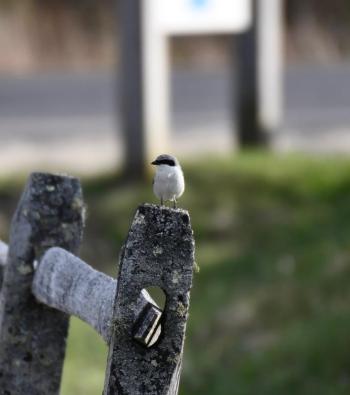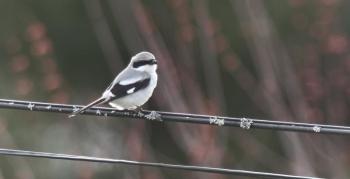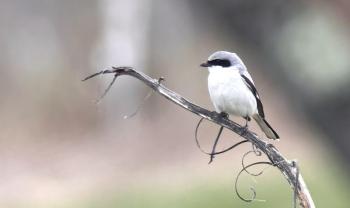Will the Southern Masked Impaler Return?
Reading the rare bird sightings here in Maine in the past week could make you think you were in the southern U.S.. Summer tanager at a Portland cemetery. Another in the same Cape Elizabeth park where a red-headed woodpecker has been hanging out. Blue grosbeak in Damariscotta.
All of these species are ones you might look for in Florida or the Carolinas, not here in Maine. All three species are presumably migrants that overshot their destination in one way or another. All three are regular but rare here in Maine.
The icing on the cake, though, was a whole other species that was spotted this week in North Yarmouth, Maine: Loggerhead shrike.
Loggerhead shrikes formerly nested across much of Maine many, many years ago. Now it is even rarer here than any of the aforementioned rare species.
In trips to the southern and western U.S., we have seen these striking black-masked birds with their gray crowns and backs that contrast with black wings and tail. Like the slighter, larger, and larger-billed northern shrike that visits Maine in winter, loggerheads perch on the tops of bushes, poles, and on telephone wires and scan for their prey, which include small birds and mammals, and large insects. These they often impale on thorns to store for later use.
Loggerhead shrikes apparently spread into Maine in the mid-1800s following the clearing of forests for agriculture and became widespread across much of the state. They began to decline in the mid-1900s but persisted as a breeding species at least until 1975 when the last documented nesting occurred in Skowhegan.
By the time we became active birders, loggerhead shrikes were exceptionally rare visitors to the state. We still have never seen one here in the state.
Unfortunately, the species has been showing a decline across its entire range, which spans from southern Canada to Mexico. In its southern Ontario breeding range, it is highly endangered, and millions of dollars have been spent on its conservation.
The first loggerhead shrike documented in Maine in the last 10 years was a bird that spent a day in mid-June at the Kennebunk Plains (a very special place for us). The one found a few days ago in North Yarmouth had so far not been resighted after it was photographed on April 21.
Interestingly, eBird shows that a loggerhead shrike was found near Laconia, New Hampshire, last week and another near Montreal on April 21. We were fascinated to discover also that a loggerhead shrike spent January through early April at the Shawangunk Grasslands NWR in southern New York, about 30 miles from the New Jersey border—even more meaningful as it was a place that we were involved in helping to protect many years ago.
Loggerhead shrikes may never return to Maine as a breeding species, but we’ll keep our eyes open and hope to at least catch a glimpse of even a one-day visitor. Maybe it will be this spring!
Jeffrey V. Wells, Ph.D., is a Fellow of the Cornell Lab of Ornithology and Vice President of Boreal Conservation for National Audubon. Dr. Wells is one of the nation's leading bird experts and conservation biologists. He is a coauthor of the seminal “Birds of Maine” book and author of the “Birder’s Conservation Handbook.” His grandfather, the late John Chase, was a columnist for the Boothbay Register for many years. Allison Childs Wells, formerly of the Cornell Lab of Ornithology, is a senior director at the Natural Resources Council of Maine, a nonprofit membership organization working statewide to protect the nature of Maine. Both are widely published natural history writers and are the authors of the popular books, “Maine’s Favorite Birds” (Tilbury House) and “Birds of Aruba, Bonaire, and Curaçao: A Site and Field Guide,” (Cornell University Press).


























